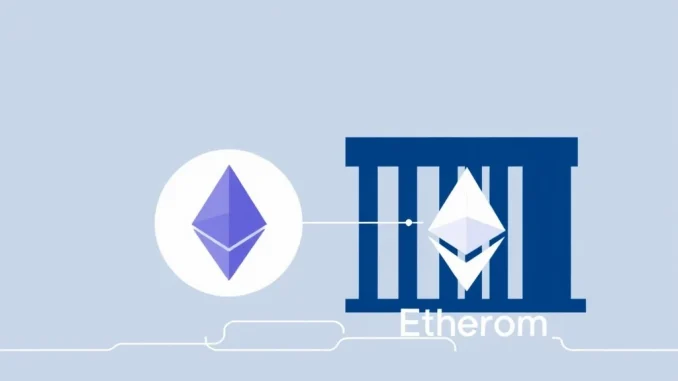
Hey crypto enthusiasts! Big news from the world of traditional finance meeting blockchain. BlackRock’s move into tokenized assets is picking up serious steam, and their BUIDL fund is making headlines. This isn’t just another crypto project; it’s a giant like BlackRock leveraging blockchain for real-world assets (RWA), and the numbers are starting to look quite significant.
BlackRock BUIDL Fund Reaches Impressive Milestone
BlackRock’s tokenized fund, known as BUIDL (BlackRock USD Institutional Digital Liquidity Fund), has hit a notable milestone. As of May 18th, the fund now manages a substantial $2.88 billion in assets. This growth demonstrates increasing interest from institutional investors in tokenized financial products, particularly those backed by established players like BlackRock. It’s a clear signal that the intersection of traditional finance and blockchain is moving beyond theoretical discussions into actual deployment and growth.
Ethereum Dominates BlackRock’s Tokenized Assets
Perhaps the most striking detail about the BUIDL fund’s composition is its overwhelming preference for one particular network. According to data compiled by RWA.xyz, a staggering $2.68 billion of the fund’s assets—representing approximately 95% of the total—are tokenized directly on the Ethereum network. This significant allocation highlights Ethereum’s current status as the leading blockchain for institutional-grade tokenization and real-world asset projects. Its robust infrastructure, established ecosystem, and proven track record seem to be key factors attracting major financial institutions.
While Ethereum holds the lion’s share, the remaining 5% of the BlackRock fund‘s assets are distributed across several other blockchain networks. These include platforms like Aptos, Avalanche, Arbitrum, and others. This multi-chain approach suggests that while Ethereum is the primary focus, BlackRock is also exploring or utilizing other networks for potentially different use cases or to diversify its blockchain infrastructure.
Why This Focus on RWA and Tokenized Assets Matters
The growth of the BUIDL fund and its heavy reliance on Ethereum are important indicators for the broader crypto and traditional finance markets. It signifies:
- Institutional Adoption: Major players like BlackRock are actively using blockchain for financial products, moving beyond just holding cryptocurrencies.
- Ethereum’s Role: It reinforces Ethereum’s position as a key platform for the future of finance, particularly for tokenizing assets like money market funds.
- RWA Trend: It underscores the growing narrative around Real World Assets (RWA) being brought onto the blockchain, potentially unlocking new efficiencies and liquidity.
The data from RWA.xyz provides valuable transparency into these institutional movements, allowing the public and market participants to track the progress of tokenized assets and which networks are gaining traction.
What’s Next for Institutional Tokenization?
The success and size of the BlackRock BUIDL fund raise questions about the future. Will other financial institutions follow suit? Will the allocation to Ethereum remain dominant, or will other chains capture a larger share of the RWA market? As regulations evolve and blockchain technology matures, we can likely expect more innovation and growth in this space.
This development is more than just a number; it’s a tangible example of how blockchain technology is starting to integrate with the global financial system, driven by the world’s largest asset manager.
Conclusion: Ethereum’s Institutional Edge
BlackRock’s BUIDL fund reaching $2.88 billion, with the vast majority residing on Ethereum, is a significant development. It highlights Ethereum’s current dominance in the institutional tokenization space and the growing importance of RWA within the blockchain ecosystem. As BlackRock and other firms continue to explore and build on these technologies, the bridge between traditional finance and decentralized networks like Ethereum is becoming stronger, potentially reshaping the future of asset management and investment.



